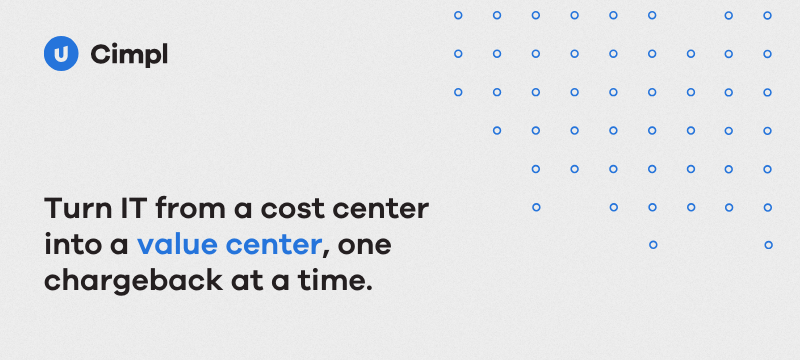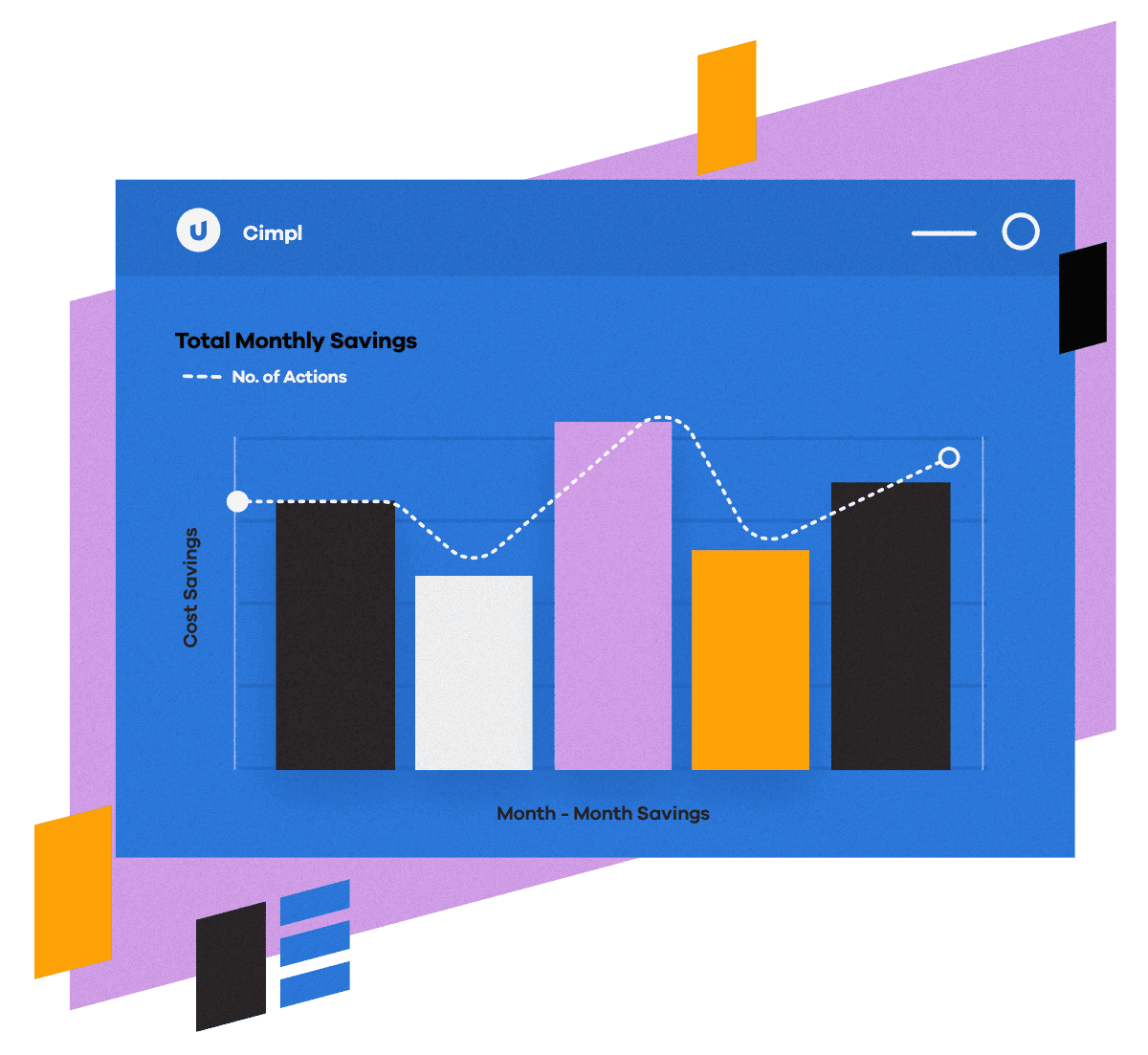At the ITFMA Conference in San Antonio, Bob Braco, Senior Product Manager at Cimpl, presented on a topic many IT leaders are rethinking chargeback.
Chargeback is commonly perceived as just billing mechanics, missing its key functionality of serving as a way to show the business what IT delivers and what it costs. When departments see both service use and cost, IT shifts from being a budget line item to a true business partner, helping drive smarter, more informed decisions.
In Bob’s session, “Showing the Value IT Brings to the Business,” he explored how chargeback reframes IT’s role in powerful ways:
- Builds cost awareness across departments.
- Encourages optimization of IT resources.
- Links technology spend to business outcomes, enabling ROI conversations.
- Improves budget forecasting by tying IT consumption to financial planning.
- Drives accountability and behavioral change in how services are consumed.
- Strengthens governance with clear audit trails.
The reactions in San Antonio were unanimous: organizations are hungry for practical frameworks that move IT from a cost center to a value center.

Why Chargeback Matters
For decades, IT has been measured as a cost driver. Budgets rise year over year, invoices stack up, and leaders outside IT often struggle to see what value those costs deliver. Without visibility, the conversation becomes one-dimensional: “Why is IT so expensive?”
Chargeback transforms that narrative. Instead of being judged only on cost, IT gains a mechanism to show what services were delivered, to whom, and for what business impact.
Let’s unpack the specific benefits more deeply.
1. Cost Awareness Across the Business
Imagine a marketing department that launches new campaigns and rapidly spins up SaaS tools without realizing the recurring monthly charges are piling up. With chargeback, those costs are surfaced back to the department. The result? Increased awareness, better decisions, and fewer “shadow IT” purchases.
2. Optimization of Resources
When employees or departments see real costs associated with their service consumption, they naturally reduce waste. Virtual machines that sit idle, unused mobile lines, or duplicate collaboration tools are no longer hidden, they’re visible.
3. Linking Spend to Business Outcomes
Chargeback ties dollars to impact. For example: “This $250,000 investment in UCaaS supported the hybrid work initiative that kept employee satisfaction scores at 92%.” IT can now frame spend in business terms, not just technical ones.
4. Improved Forecasting and Planning
Chargeback data gives finance leaders insight into how costs scale with business demand. A department planning to expand headcount knows upfront what the IT cost impact will be, leading to more accurate budget planning.
5. Accountability and Behavioral Change
Departments become accountable for their technology choices. Overconsumption, underutilization, or redundant tools become the responsibility of the business unit—not just IT.
6. Strengthened Governance and Audit Trails
In regulated industries, chargeback adds another layer of compliance. With transparent allocation of costs and consumption, organizations can easily trace how funds were used and by whom.

The Cultural Shift
Chargeback is not just about numbers. It represents a cultural shift in how IT engages with the business.
Historically, IT leaders have fought to prove value. A CIO may approve multi-million-dollar cloud migrations, only to have finance question the mounting invoices months later. Without context, IT is cornered into defense.
With chargeback, IT comes to the table as a business partner, armed with data that tells a story:
- “Here is what we delivered.”
- “Here is who used it.”
- “Here is the business outcome tied to that spend.”
This changes the tone of conversations from scrutiny to collaboration. Finance and IT align, business units gain visibility, and executives see IT as an enabler of outcomes—not just an overhead expense.

A Simple Framework to Start with Chargeback
Implementing chargeback doesn’t have to feel overwhelming. A few practical steps can get any organization started.
Step 1: Map Services to Costs
List the IT services your organization provides and attach real costs. Don’t stop at licensing or bandwidth, include indirect costs like support, infrastructure, and security. Transparency is the foundation of accountability.
Example: For wireless services, include not just the monthly carrier bill, but also device costs, help desk support, and security management.
Step 2: Engage Stakeholders Early
Bring department heads and finance teams into the conversation before rollout. Many will fear chargeback is a “penalty.” Reframe it as a visibility tool that empowers smarter decisions.
Example talking point: “We’re not here to punish you for using IT. We’re here to show you what it costs so you can make the best decisions for your department.”
Step 3: Start Small and Automate
Pick one service, one department, or one business unit to pilot. Use automation tools to generate reports and reconcile invoices. Manual tracking in spreadsheets is a recipe for mistrust and errors. Automation builds confidence.
💡 Pro tip: Quick wins build momentum. Start with an area where you know savings are possible (e.g., unused mobile lines or cloud overprovisioning).
How Cimpl Adds Value to Chargeback
This is where Cimpl shines. Chargeback succeeds when there is visibility, automation, and trust in the data.
Cimpl is a complete Technology Expense Management (TEM) service that makes this possible at enterprise scale.
Here’s how:
- Automated Invoice Processing: Cimpl ingests, validates, and reconciles invoices across wireless, wireline, IoT, UCaaS, and cloud. This removes the manual burden and ensures accuracy in chargeback allocations.
- Unified Inventory Management: One of the biggest challenges is knowing what you have and who owns it. Cimpl provides a single source of truth for assets, services, and users, so costs can be tied directly to consumption.
- Allocation & Chargeback Engine: Costs can be allocated at any level, department, business unit, region, or project. This granularity gives finance leaders clarity they’ve never had before.
- Self-Service Procurement: Employees can request devices, services, or changes through Cimpl, with costs automatically tracked and assigned to the right department.
- Dashboards & Reporting: Real-time dashboards let IT, Finance, and executives see costs and consumption in business terms. This turns chargeback into a communication tool, not just a financial one.
In short, Cimpl provides the plumbing and intelligence needed to make chargeback work outside of an accounting exercise, to put you in the driver seat of cultural change.
Case Examples
Case 1: Financial Services Optimization
A large Canadian bank struggled with thousands of wireless lines, many unused. By implementing chargeback through Cimpl, they surfaced costs back to departments. Within three months, unused lines were deactivated.
Case 2: Public Sector Accountability
A provincial government used Cimpl to allocate cloud costs across ministries. Departments gained visibility into usage patterns and quickly identified overprovisioned services. Result: reduced waste and improved trust between IT and Finance.
The Future of Chargeback
Chargeback is evolving. Forward-looking organizations are combining it with practices like showback, TBM, and FinOps.
- Showback vs Chargeback: Even if costs aren’t billed directly, showing usage and spend builds awareness.
- FinOps: Cloud spending requires new disciplines. Chargeback provides the foundation for aligning cloud costs to business value.
- TBM (Technology Business Management): Chargeback aligns perfectly with TBM frameworks, creating a common language for IT and Finance.
Ignoring these trends leaves organizations exposed, overspending, under-forecasting, and unable to connect IT costs to business value.

Conclusion: Chargeback as a Storytelling Tool
Chargeback is not just about dollars. It’s about telling a story:
- What IT delivered.
- Who used it.
- How it supported business outcomes.
Cimpl makes that story possible with automation, visibility, and trusted data. The result? IT leaders move from defending costs to demonstrating value.
If your organization is exploring or refining its chargeback strategy, now is the time to act.

About the Speaker
Bob Braco, Senior Product Manager at Cimpl, has more than 20 years of experience driving excellence in accounting and financial planning. His career spans client-side leadership roles, consulting, and product management, with deep expertise in ITFM, TBM, TEM, and business process improvement. Today, he helps organizations bridge the gap between IT and Finance, transforming technology spending into measurable business value.
